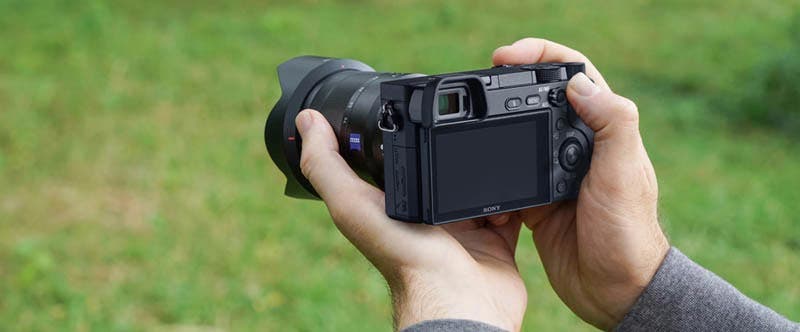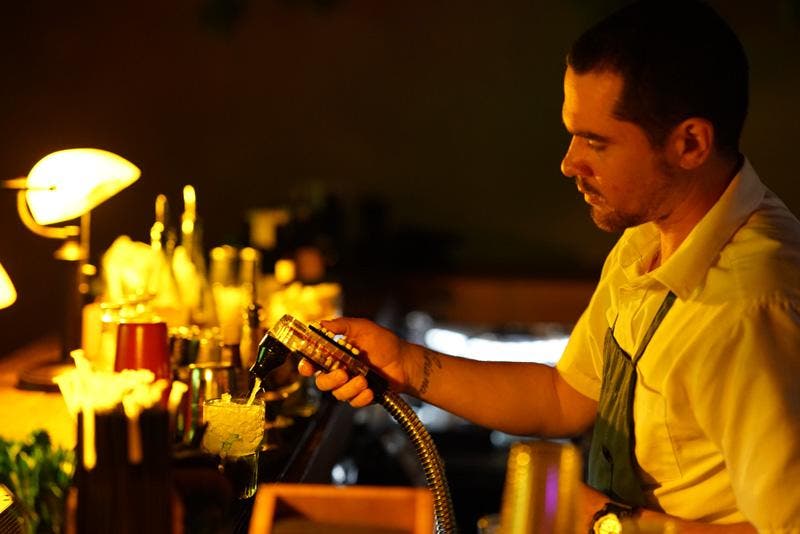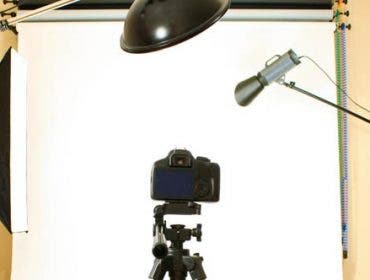At first glance, it would appear that the Sony Alpha a6300 is a modest upgrade of the very successful a6000, a camera it closely resembles, but with the significant addition of UHD 4K video capture capability. Despite the similarities, the a6300 qualifies as a genuine technological breakthrough camera that redefines the mirrorless camera category and takes it to an entirely new level.
The a6300’s defining feature that raises the bar and allows this camera to deliver performance that rivals that of top-tier DSLRs is Sony’s new state-of-the-art 24.2MP APS-C-format CMOS sensor. The new sensor structure results in greater sensitivity and enhanced performance, particularly when shooting in low light. As a result the a6300 provides higher ISO settings, now expandable to ISO 51200, plus the ability to shoot 120 fps slo-mo video in Full HD.
Additionally, the a6300 achieves precise autofocus faster than any other camera in current production—down to 0.05 sec. In terms of overall image quality, the a6300 is unsurpassed delivering 14-bit RAW file output that noticeably increases the potential tonal range and color gamut captured in each image.
The Sony Alpha a6300 delivers UHD 4K video performance that is sure to delight pros and serious videographers, and expand the growing ranks of multimedia shooters. It can capture UHD 4K 3849 x 2160p video at 30 fps, 25fps, and cinema style 24 fps in XAVC S format. It is also significant and noteworthy that recordings made in the 16:9 Sipoer35mm format are actually captured at 6K (6000 x 3376p) and then output in 4k at about 8MP, an oversampling rate of 2.4x. This results in videos that capture greater detail, simply look better, and have virtually no aliasing, pixel binning, or other artifacts.
Indeed, in 4K the a6300 captures a greater number of pixels (20M) than the full-frame Sony a7RII (15M), and it supports custom color profiles and a choice of 3 S-Log3 Gamma profiles enabling users to capture a much wider dynamic range, smoother tonal transitions, and better detail, which is especially noticeable in the shadow areas.
Another notable upgrade in the a6300 is its XGA Tru-Finder OLED EVF, which now provides full XGA (2.36m-dot) resolution instead of the 1.44m-dot resolution of the a6000’s OLED EVF. The difference between the two EVFs is quite noticeable in the field, not just because the a6300 has a higher resolution, but also because it has a more rapid refresh rate and the finder image is integrated with the camera’s far quicker and more decisive AF system. The result is a truly continuous viewing image that rivals that of the optical viewfinders in top-tier DSLRs, along with the EVF’s advantage of being able to see exposure corrections in real time and view subjects in low light much more easily. The difference between the EVF in the a6000 and a6300 is highlighted when shooting action subjects such as sports—the a6300’s viewing image looks more natural, and the colors are even more vibrant.
Hands-On Impressions
The first thing you notice when picking up the a6300 is that it feels a lot more substantial, solid, and better balanced than the current a6000 even though its form factor is virtually identical. That’s because Sony’s new top-of-the-line APS-C model is built on a magnesium alloy chassis and has a metal outer body and lens mount whereas the a6000 is built on a polycarbonate chassis. Both models are ergonomically contoured and have well proportioned built-in mini-grips, but the a6300 is weatherproof, and very well sealed against moisture and dust, so it’s a far better choice for those that have to shoot under challenging conditions.
The a6300’s EVF viewfinder is absolutely fantastic, and I was able to frame capture images in light so low I could hardly see the subject with my naked eyes! Also, as a long-time eyeglasses wearer, the fact that the high-eye-point finder has a large-than-life-size magnification of 1.07x and a wide range of diopter adjustments (-4.0-+3.0) is a big plus. Also, in the heat of shooting an active subject you don’t have to take the camera down from you eye to make settings because everything you need, including ISO, shutter speed, aperture, and exposure compensation is clearly displayed along the bottom of the finder field.
When shooting fast action like a volleyball game or athletes doing flips the camera was able to lock focus on the subject and track it tenaciously as it moved through the frame—this is definitely a great camera for shooting fast action of any kind, from kids to high-speed sports. And it maintained accurate focus through entire 21-frame sequences at 11 fps, or 8 fps in Live View, a commendable performance. Equally impressive was its ability to focus very rapidly on portrait subject details, and to focus with even greater precision by selecting the magnification feature, which sets the camera for contrast-detection AF. Indeed the only times the camera failed to focus swiftly and accurately was when we attempted to shoot some close-up portraits wide open in extremely low light with the gorgeous Sony FE 85mm f/1.4 GM lens. The camera “hunted” back and forth for a second of two before finally achieving focus, and I probably should have switched to manual focus, which is quite easy to do on the fly.
The a6300 has so many other plus points it’s not possible to cover all of them in this short review, but the fact that there are 9 customizable buttons that you can set to control 64 different functions makes it easy to configure this camera to your personal shooting style, and the menus options, while very extensive, are easy to navigate and set. In general, the a6300 operates with seamless precision, though I would have wished for a more prominent and comprehensive command dial accessible by my right index finder, such as those as found on some DSLRs.
The bottom line: when it comes to sheer image quality and the real world shooting experience, this camera frankly performs at a level that surpasses any other APS-C-format camera I have ever shot with, and equals or exceeds the real world performance of many top-tier pro DSLRs. While the still current Sony Alpha a6000 (Adorama price: $498.00) represents a great value, especially if you’re not into shooting action and don’t require UHD 4K video, I strongly advise any serious enthusiast or pro to spend the extra $500 and opt for the Sony Alpha a6300. It may not look like it at first glance, but it’s three times the camera at twice the price, and it may well be the most advanced digital camera in current production.
























